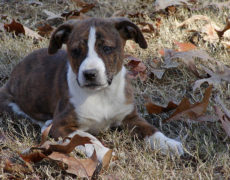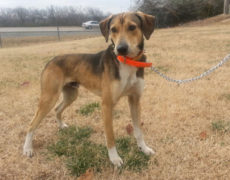Treeing Cur
Treeing Cur is a breed of medium-sized dogs that show excellent treeing ability when used for hunting raccoons, squirrels, wild boars, opossum, mountain lions, bobcats, and bears. These powerful working dogs come with a broad head, slightly short muzzle, drop ears, low-set tail, and long legs that help in moving quickly in rough terrain.
Treeing Cur Pictures
- Brindle Treeing Cur Dog
- Images of Treeing Cur
- Pictures of Treeing Cur
- Treeing Cur Dog
- Treeing Cur Images
- Treeing Cur Pictures
- Treeing Cur Puppies
- Treeing Cur Puppy
- Treeing Cur
- Treeing Curs
Quick Information
| Coat | Short/medium, smooth/rough outer coat, short, dense, soft undercoat |
| Color | Any color including black, red, and brindle |
| Breed Type | Mixed breed |
| Category | Curs, Scenthound, Working Dog |
| Lifespan | 8-12 years |
| Weight | 30-60 lbs |
| Size | Medium |
| Height | 18-24 inches |
| Shedding | Moderate |
| Temperament | Athletic, intelligent, alert, dauntless |
| Hypoallergenic | No |
| Good with Children | Yes |
| Barking | Occasional, excessive when hunting |
| Country Originated in | USA |
| Competitive Registration/ Qualification Information | DRA, UKC, NKC |
Treeing Cur Video: Treeing a Squirrel
History
Several Cur breeds including the Treeing Cur originated in the rural areas of the United States. Instead of standardizing their looks, breeders wanted to focus on their performance and developed dogs that could be used for hunting, watching, and guarding.
The United Kennel Club recognized the breed in 1998.
Temperament and Behavior
Described as one of the toughest and most agile treeing dogs, the Treeing Cur is a courageous hunter that uses its eyes, nose, and ears to track game. When on pursuit, it may bark or remain silent.
Aside from its outstanding treeing abilities, it makes an excellent family companion. It has a natural desire to please and can do anything for its master. It gets along well with other dogs in the family if raised with them. However, this breed needs firm leadership; otherwise, it would become over-protective and aggressive.
Care
Exercise
Being an energetic working dog, the Treeing Cur needs plenty of regular activities. Brisk walking or jogging helps it in maintaining good health when not hunting. It loves running free and playing interactive games in the yard.
Grooming
Its short or medium hairs require occasional brushing for the removal of loose fur. To avoid drying out its skin, bathe when necessary. Use hemostats for removing excess hair in its ear canal and nail clippers for trimming its toenails.
Health Problems
Although these dogs have few genetic conditions, some individuals may suffer from deafness, blindness, and albinism.
Training
As an intelligent and responsive working dog, the Treeing Cur can easily learn what their handlers teach them.
Socialization: Start socializing your Treeing Cur puppy by bringing it to your friends’ houses so that it can interact with your friends and their dogs. Take your pup on walks and encourage positive interaction with other people. Make sure the dogs it socializes with are vaccinated against roundworm, ticks, fleas, and mites.
Preparing for the hunt: When your pup is of 3-6 months old, begin training with dead squirrels, or hides and tails of a squirrel. Reward it with treats when it retrieves the decoy and starts barking. You can also use a live squirrel trapped in a cage, setting it in an elevated position. Once its curiosity increases, it will move closer and check the squirrel out. When it starts barking, reward it with treats.
Feeding
A nutritious diet consisting of a balanced proportion of carbohydrate, vitamins, minerals, protein, and fat would help in maintaining good health.















